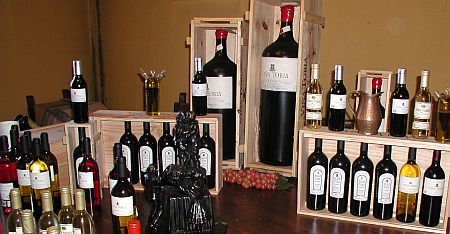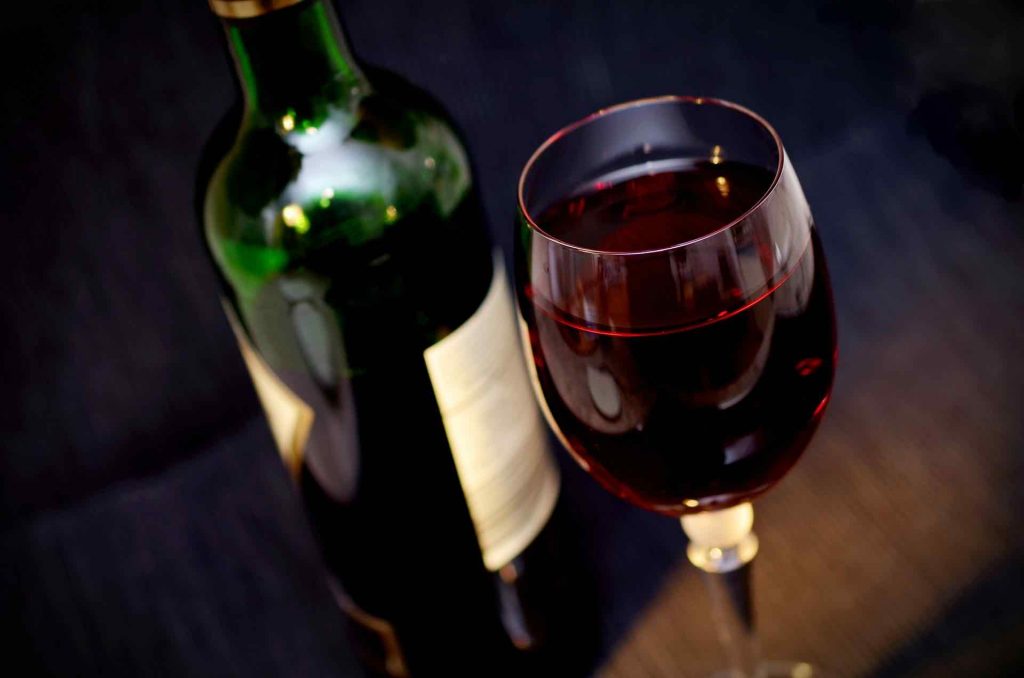further down, find links leading to more information about Spanish drinks, plus Spanish drink recipes …
Few of us are expert in the field of wine – we just know what we enjoy.
And Spain is becoming an increasingly respected producer of wine.
Wine tours Spain are now extremely popular and sangria has long been a “must” when visiting the country.
On top of being a delicious experience for your taste-buds, a glass of red wine a day should be beneficial to your health.
So, sit back and sip your glass of Rioja and enjoy this simple guide to spanish wines – categorized by colour and region.
Check out also our wonderful Spanish recipes page, where you’ll discover many tasty and affordable recipes to accompany your glass of wine.
¡Qué aproveche!

spanish wine – red wine
-
- Valdeorras is a small area in the east of Galicia and its fresh-tasting reds – made from the native Mencia grape – are highly recommended.
- Toro produces extremely powerful reds – using a mutation of Tempranillo.
- Campo de Borja wines – made from the Garnacha grape – must attain a minimum 13% alcohol content, resulting in some stunningly alcoholic reds!
- La Mancha – located in arid plains stretching from Madrid to Valdepeñas – produces classy reds from the Cencibel (Tempranillo) grape.
- Valdepeñas is famed for Tempranillo reds that have been cask-aged and labelled “Reserva” or “Gran Reserva”. Oakey and full-flavoured.
- Rioja is one of the best-known areas for wine. Its red wine has a thick, creamy texture and fruity flavour. Grape varieties of this region, production methods and names of wine are too many to list, but a good guide to quality is the length of time matured.
spanish wine – white wine
-
- Rías Bajas – in the region of Galicia – has a reputation for fragrant, floral, dry white wines produced from the grape variety Albarino.
- Ribeiro – meaning “riverside” – produces excellent whites with strong overtones of orange blossom.
- Rueda produces white wine only – some of Spain´s most agreeable, light dry whites.
- La Mancha also grows the Airen grape, producing a refreshing, lemony white wine.
- Valencia is renowned for its Moscatel de Valencia – a sweet white wine. This wine doesn´t undergo normal fermentation, but is made by adding grape spirit to freshly-pressed Muscat juice.
spanish wine – rosé wine
-
- Navarre – located on the River Ebor – is know for its fresh, fruity rosada or rosé wine.
- Cigales principally makes dry rosados and a little red, using the two main grapes of Rioja.
spanish wine – sparkling wine
-
- Penedès – near Barcelona – is the centre of the Cava industry and base for the mighty House of Torres. A prolific region, it also produces a wide variety of good quality red and white wines.
- Asturias is famed for its cider – both sparkling and flat – locals pouring out their cider in a very unique way.
spanish wine – label
-
- Bottles labelled Joven (Young) are the juniors.
- Crianza is aged for one year in a barrel and one year in a bottle before release.
- Reserva spends one year in a barrel and a further two in the bottle.
- Gran Reserva is aged for a minimum of two years in wood and held in the bottle for three.
You may also notice the initials DO on a bottle.
It stands for Denominación de Origen – literally meaning “Denomination of Origin”, portraying where the wine comes from.
This now has an “upper level” for the very best wines – Denominación de Origen Calificada – or DOCa.
Rioja was the first region declared a DOCa, in 1991.
However, as with everything else in life, the main thing is to choose the one you, personally, like best.
¡Salud! ¡Qué aproveche!
Click here to go back to the main Spanish Drinks & Wines page.

